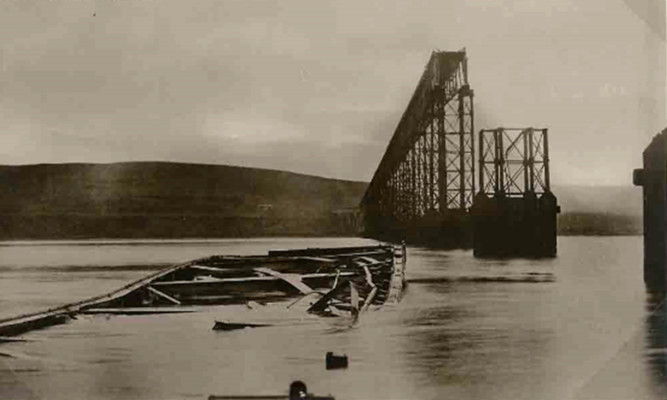As the Tay Bridge collapsed in a December storm in 1879, there must have been many who wished the warning of Patrick Matthew had been heeded.
Ten years before in December 1869, Mr Matthew who farmed Gourdiehill, Errol, wrote to this newspaper pointing out the folly of building a bridge near the mouth of the firth.
Mr Matthew is better known for proposing evolutionary theory well before Charles Darwin.
Indeed there has been a furious reaction from Darwinists of late to the resurfacing in this newspaper of Mr Matthew’s studies.
Darwin’s supporters still jealously guard the right to claim descent from monkeys and have been howling down the work of Patrick Matthew, a remarkable man who embraced modern ideas in industry and agriculture. His land supplied food to a growing Dundee and he watched with satisfaction as the city developed into an industrial powerhouse.
As the city’s capitalists piled cash into a fund to build a railway bridge, Mr Matthew felt he had to interject.
He set out his reasons against the chosen site in a highly technical letter published in The Courier.
In short, he warned it would be unstable.
Mr Matthew argued for a bridge to be built at Newburgh, 12 miles upstream, where the firth contracts into a river.
“It would afford as great, or superior, advantages to Dundee at a third of the cost,” he stated.
Mr Matthew had proposed a Newburgh crossing even before the Dundee and Perth railway was built.
His concern over the chosen site was the effect bridge piers would have on currents and silt.
Piers, especially at the north shore, would force the current into the middle of the river and push sand deposits to the harbour.
In turn, a more powerful current rushing between the piers in the middle of the river would deepen the channel and make the bridge unstable.
Another opponent of the bridge was the rival Caledonian Railway but purely for commercial reasons. It talked down the project but preventing an expansion by the North British Railway was its motive.
